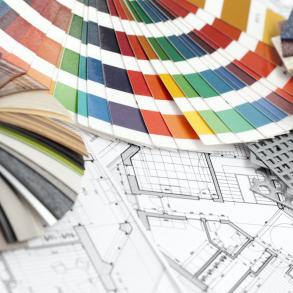From warehouses and factories to abattoirs and builders-yards, refurbishing washrooms in the industrial environment requires careful planning. While there are commonalities across professional washroom refurbishments, the specific needs of industrial environments bring unique challenges and considerations.
Understanding User Needs
In industrial settings, washrooms often cater to workers engaged in heavy-duty or dirty tasks. Therefore, the design should prioritise user needs, ensuring not only their comfort but also the longevity and functionality of the washroom. Here are some key guidelines to consider:
Minimising Physical Contact
In today's health-conscious world, reducing touchpoints is more crucial than ever. Consider installing elbow-operated taps or sensor taps. Doors that open with a push from the toe, shoulder, or back can minimise hand contact, reducing the spread of dirt and making cleaning easier. Additionally, sensor-activated lights and flush kits can further reduce touchpoints.
Effective Drying Solutions
While sensor-activated hand dryers like the Dyson Airblade reduce contact, paper towels remain popular in some settings. If opting for paper towels, ensure ample dispensers and waste bins are available.
Ample Washdown Space
A small basin might not suffice in industrial settings. Wash troughs, offering more space, are ideal. They are also easier to clean, reducing maintenance efforts. Depending on the industry, consider providing separate washing and showering rooms, leading to toilet cubicles. This setup can be especially beneficial for workers needing thorough cleaning post-shift.
Anti-Vandal Fittings
Industrial washrooms often experience rougher use. To ensure durability, opt for anti-vandal or robust fittings. These can withstand heavy use, ensuring the washroom's longevity.
Effective Space Utilisation
Space constraints are common, but with smart design, even limited spaces can be optimised. Recognise the unique flow in industrial washrooms: workers often wash their hands before and after using facilities. In settings like auto repair shops, where substantial dirt and grease are common, allocate space for aggressive hand-cleaning products and personal storage.
Lockers and Changing Facilities
Providing lockers can help workers store personal belongings securely. Materials like Solid Grade Laminate (SGL) are durable and water-resistant, making them ideal for damp industrial environments.
Safe Flooring
Safety is paramount. Non-slip flooring is essential, especially in areas prone to water spillages. Rubberised floor coverings, similar to those in hospitals, are often suitable. In some industries, floor drains can facilitate deep cleaning or hosing down the washroom.
Conclusion
Industrial washrooms differ significantly from those in offices or restaurants. They must withstand heavy use and cater to specific user needs. By incorporating durable fixtures, optimising space, and prioritising safety, you can create a functional and long-lasting industrial washroom. For personalized advice and solutions, reach out to our team at 01202 650900.
As always, our team are at the end of the telephone for all your queries and questions and have a wealth of knowledge they’re happy to share with you. So if you need some guidance, or would like to talk over your options, you can give them a call on 01202 650900.




